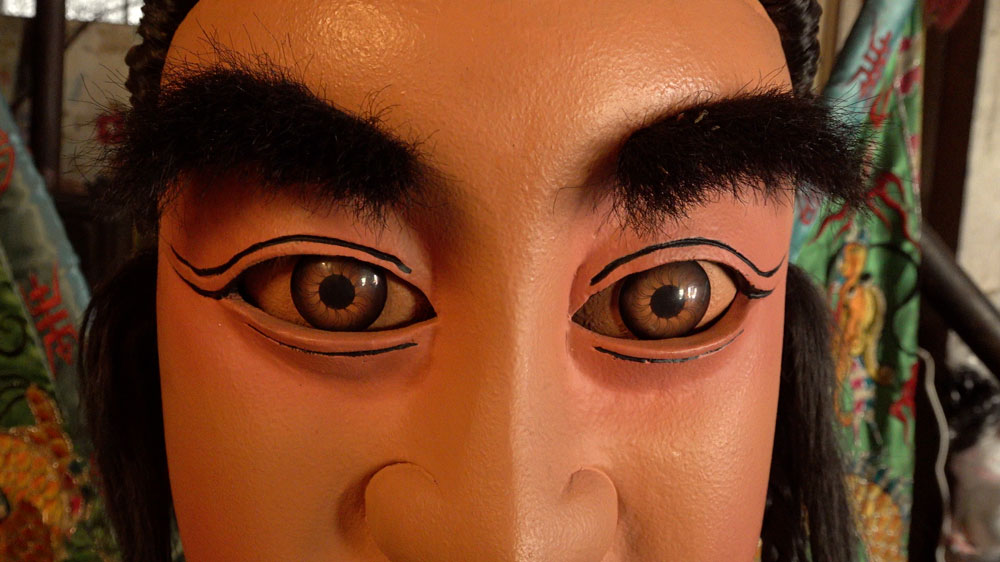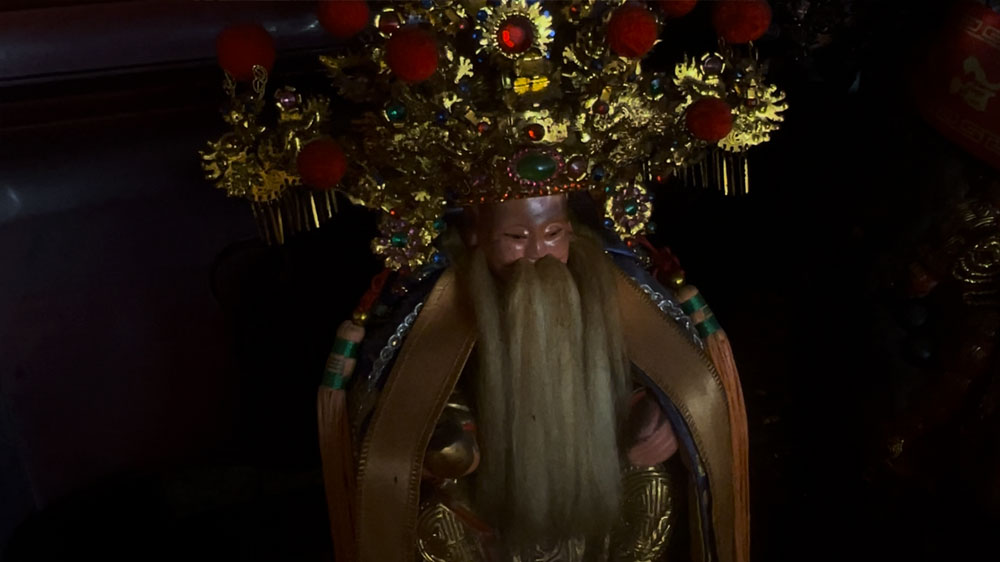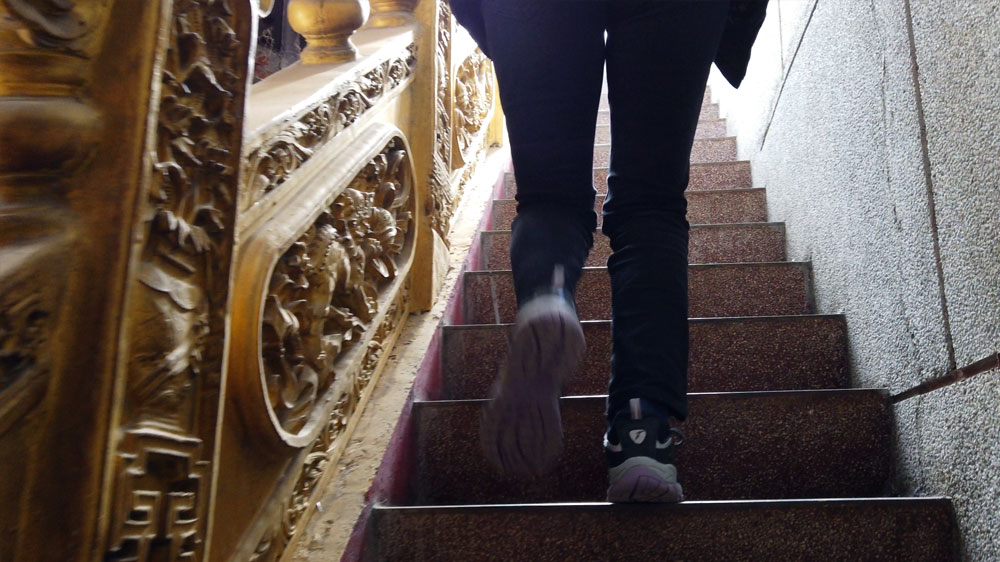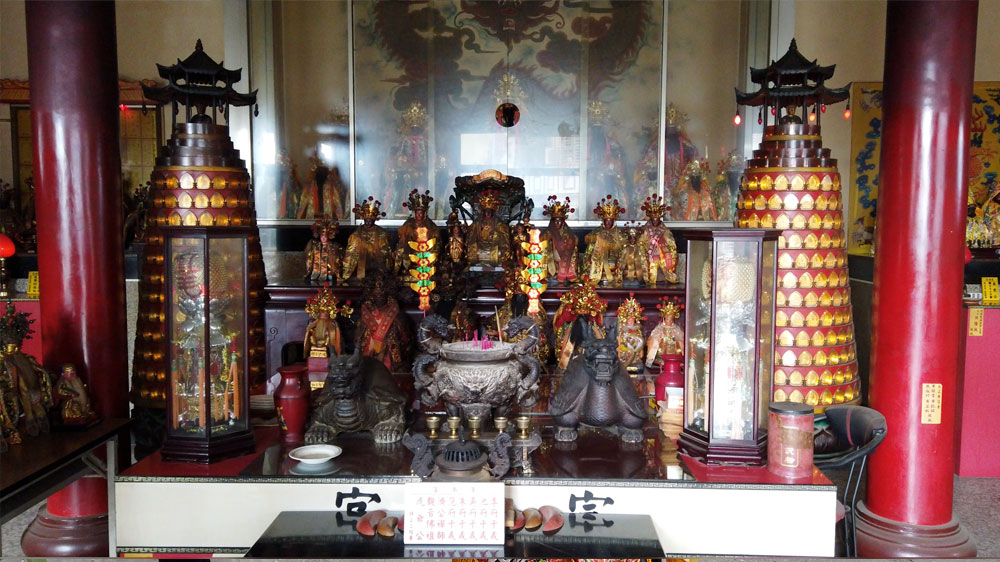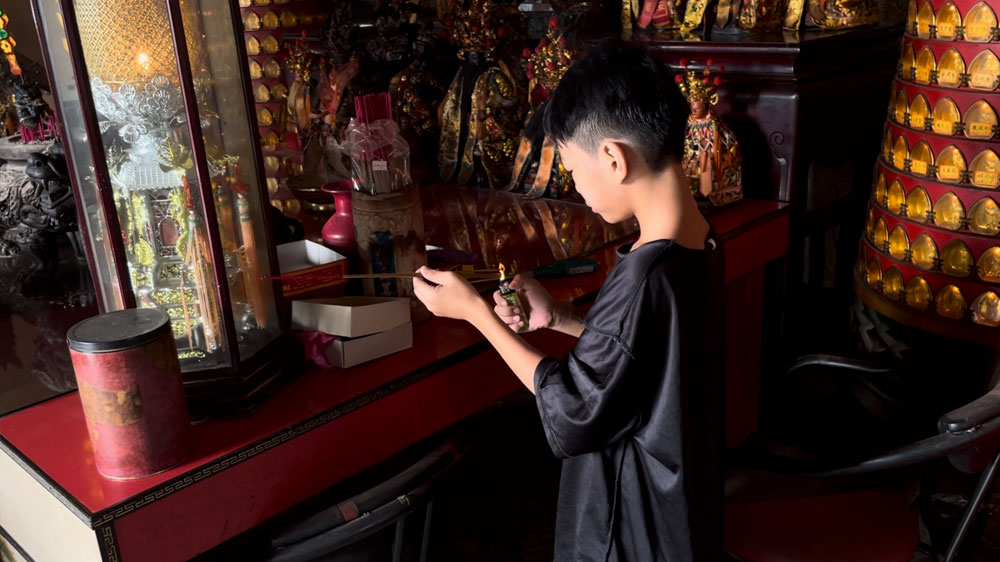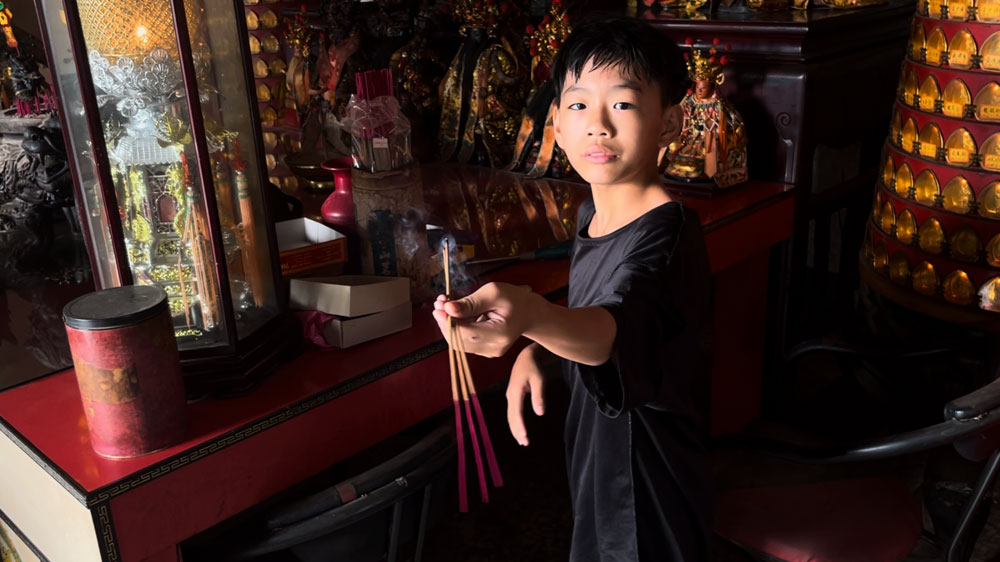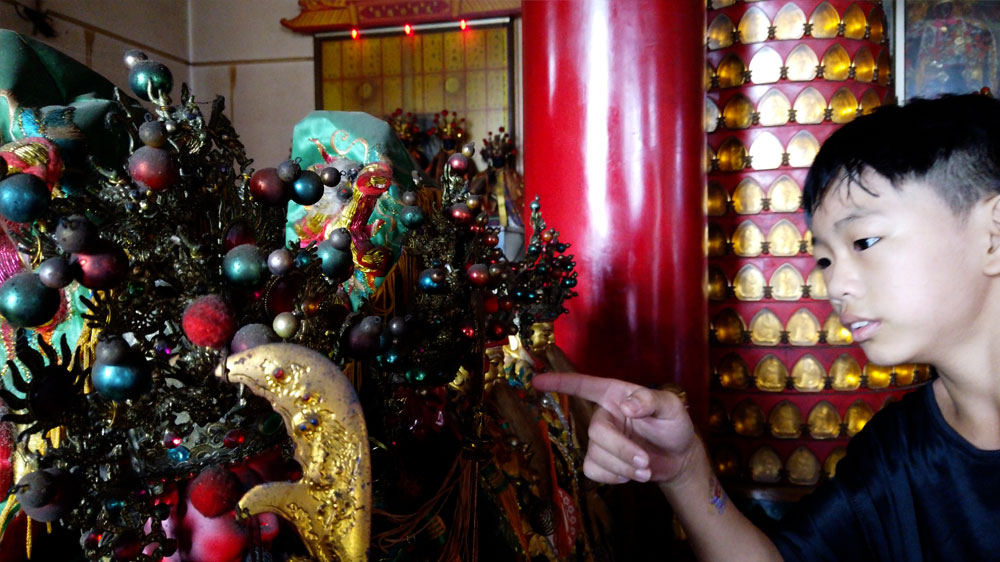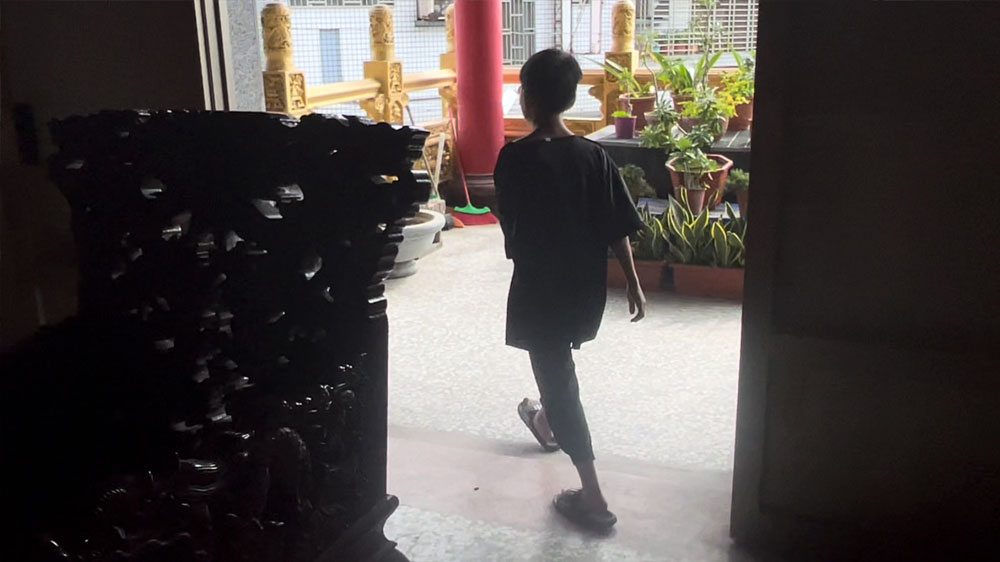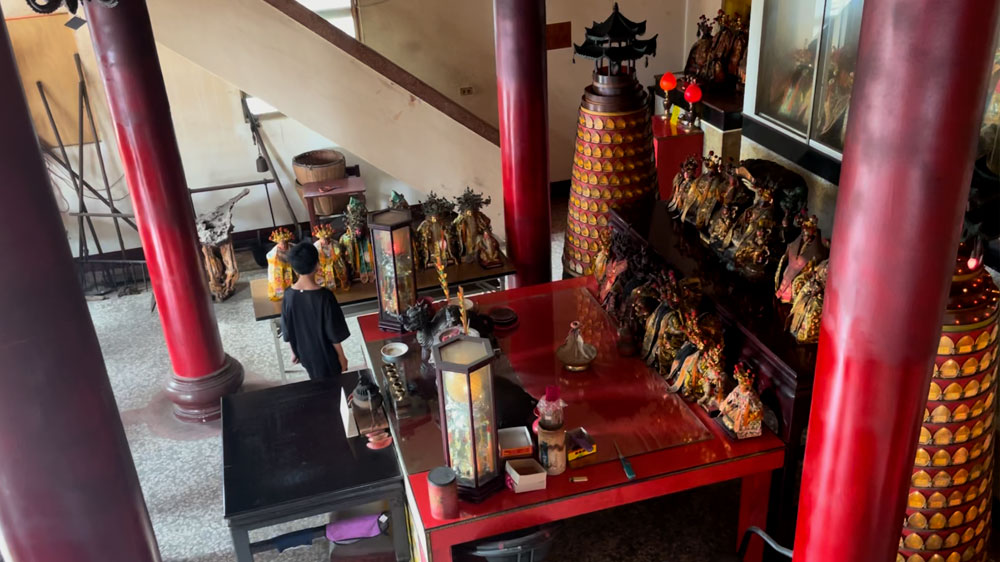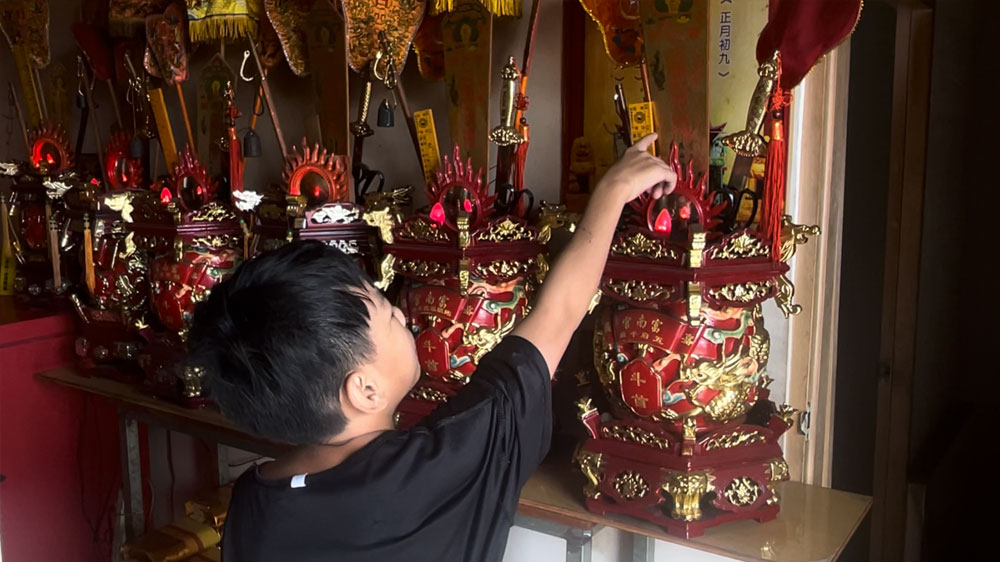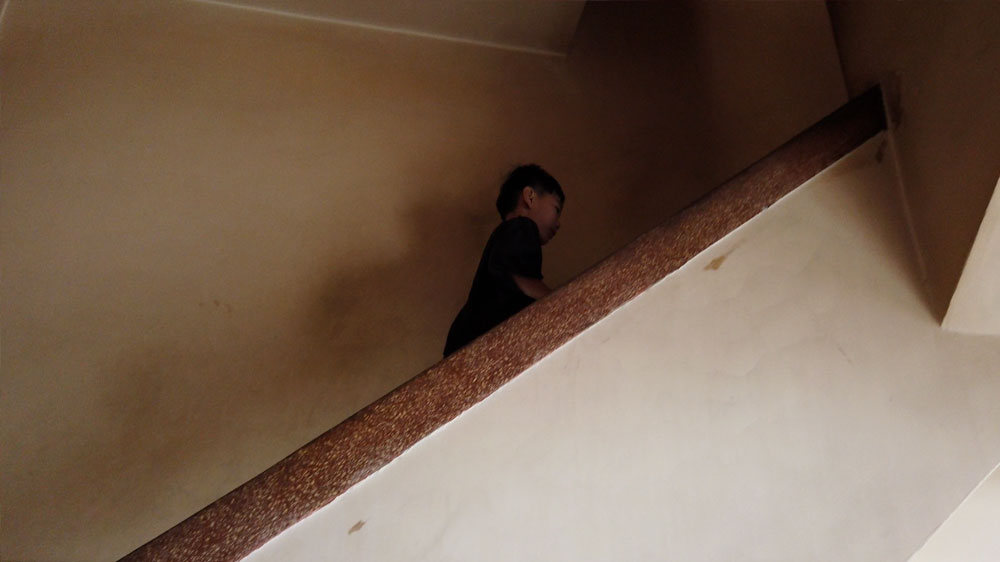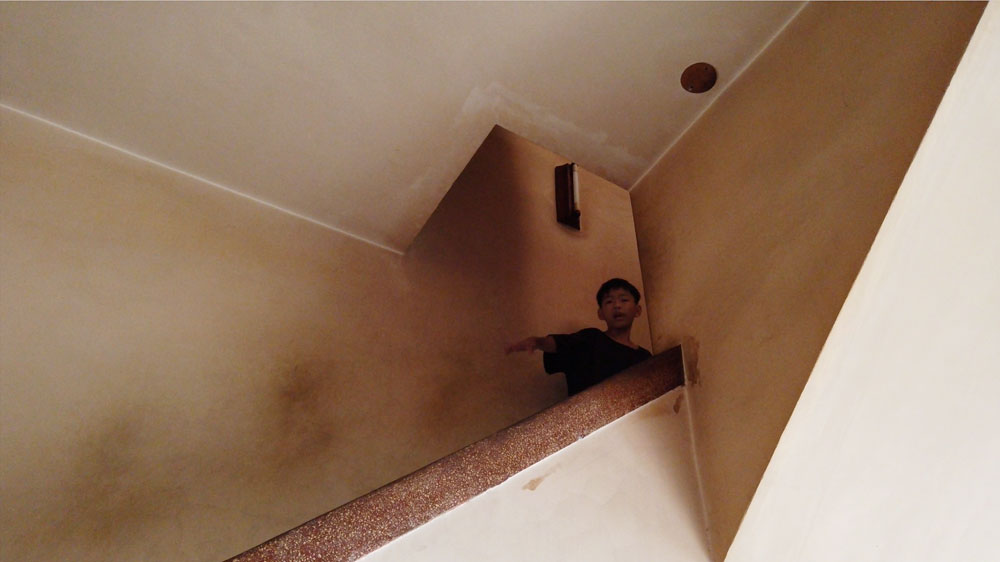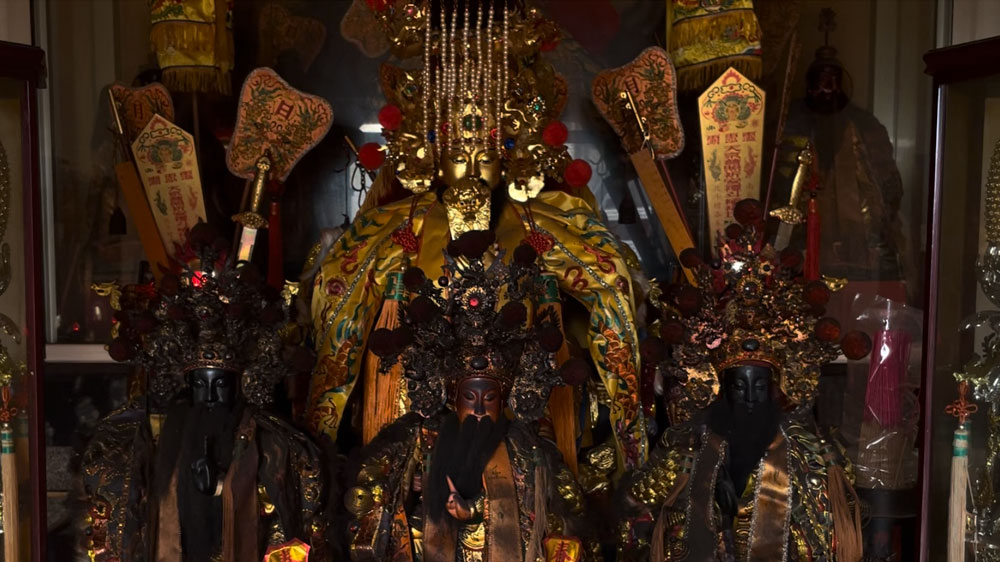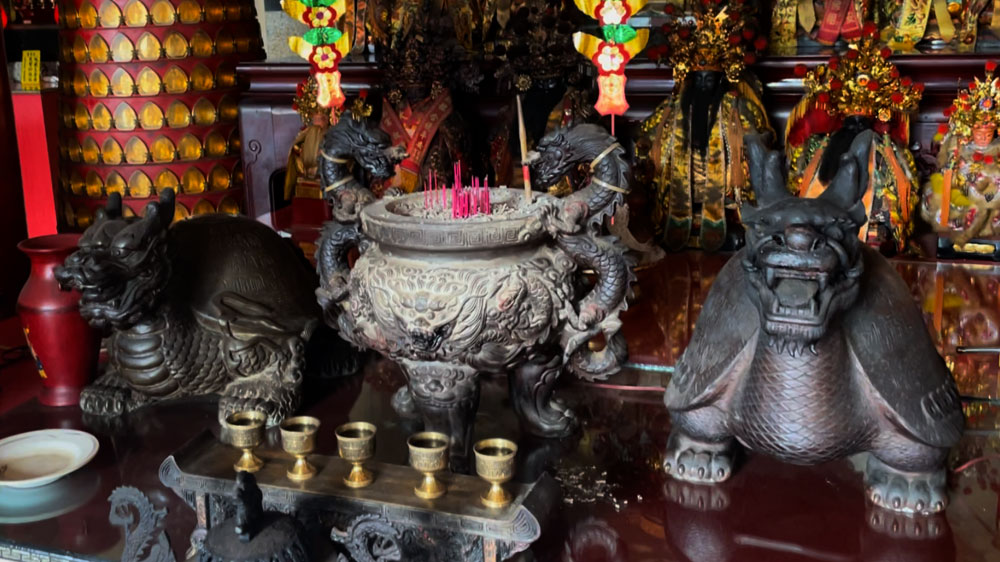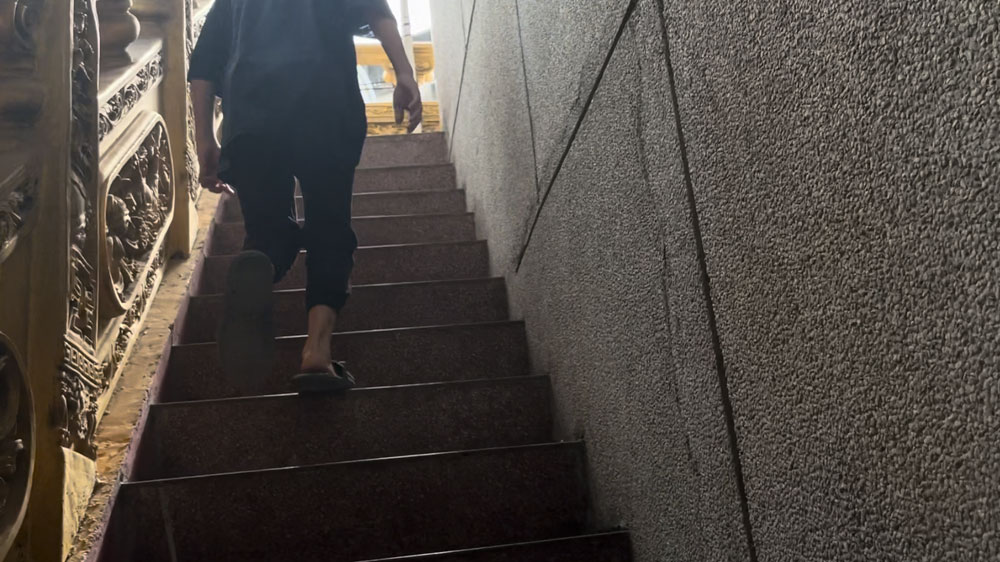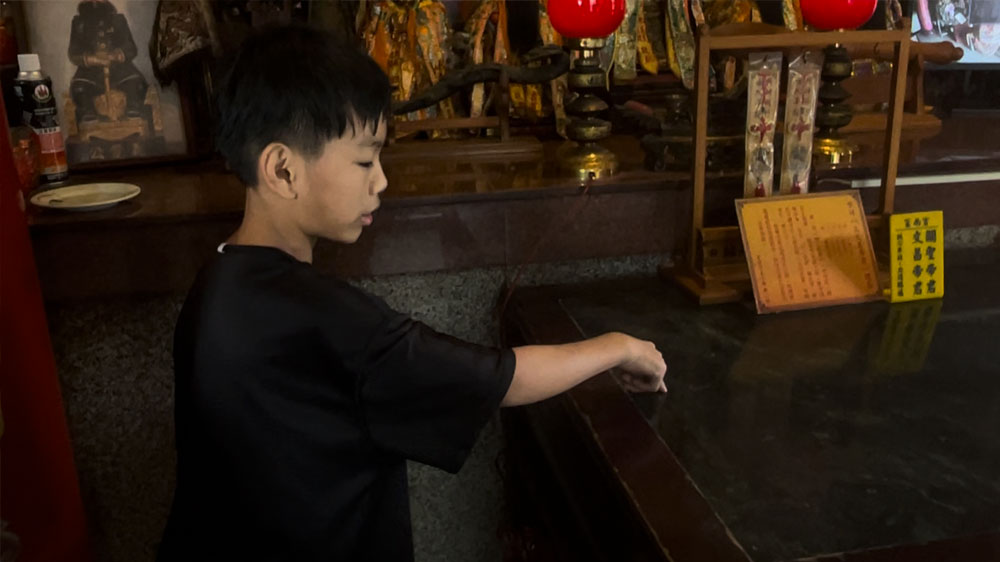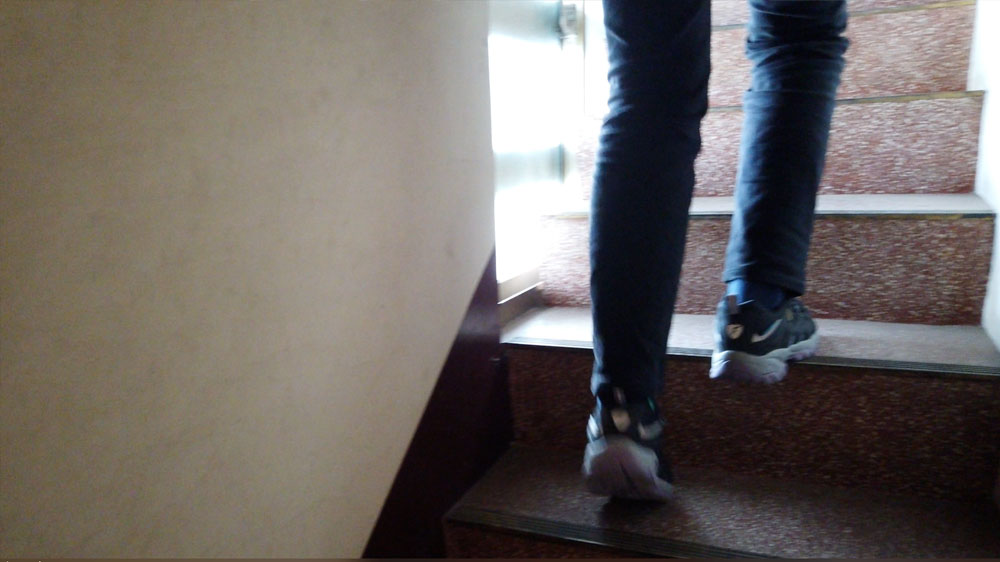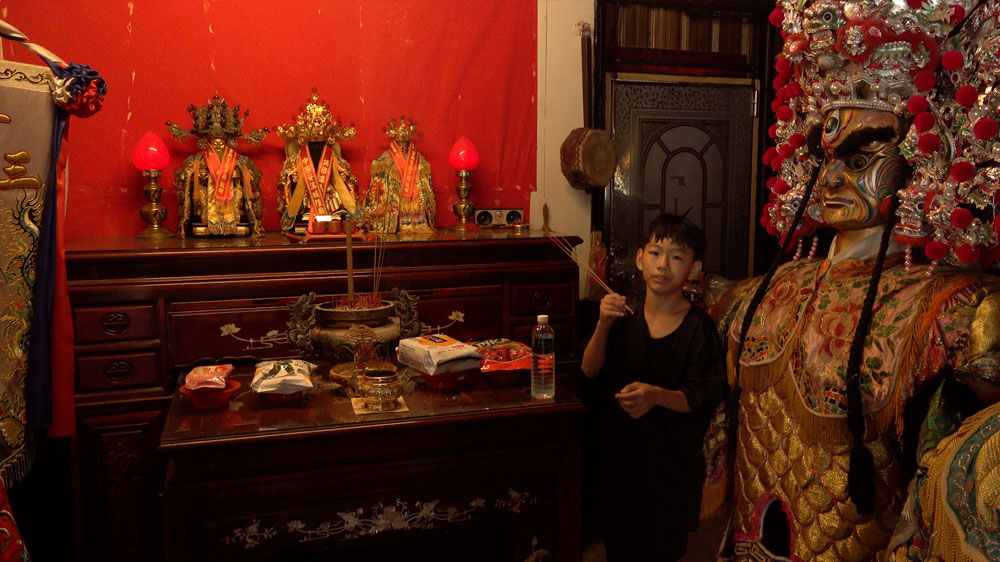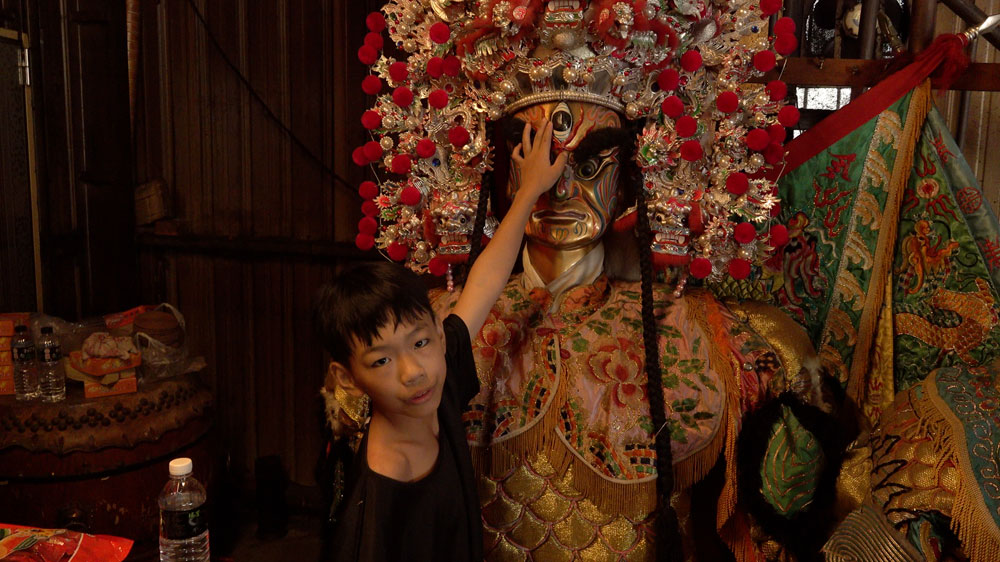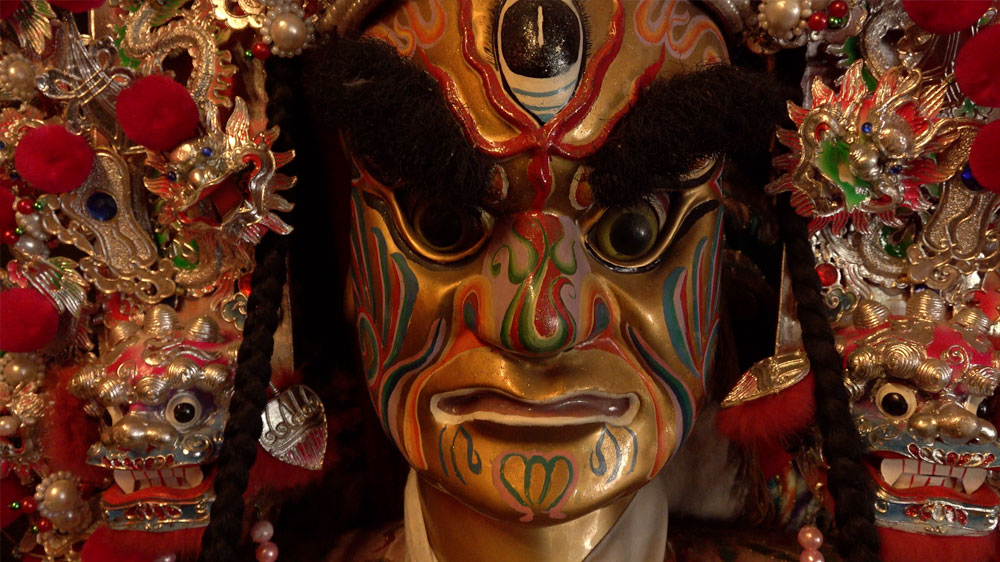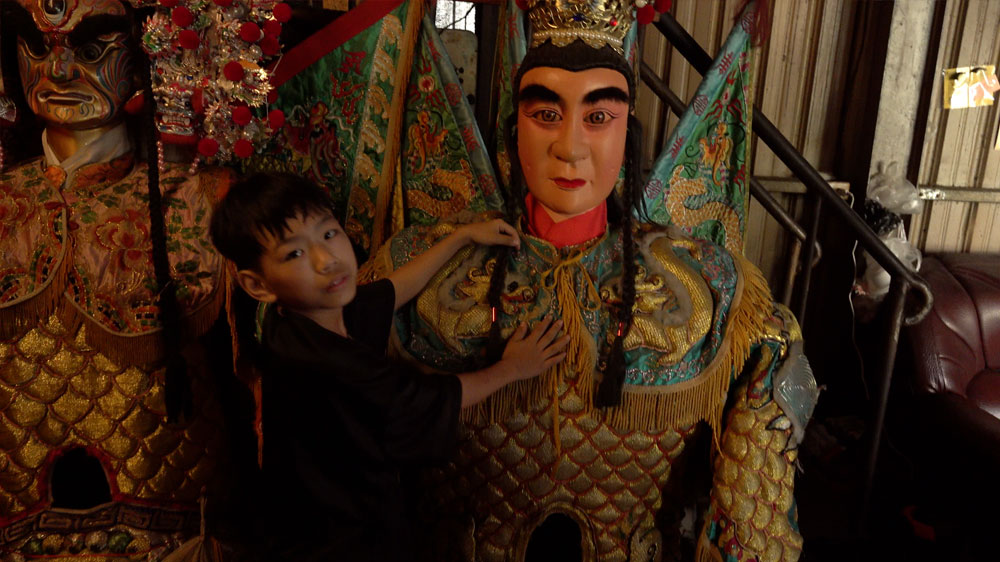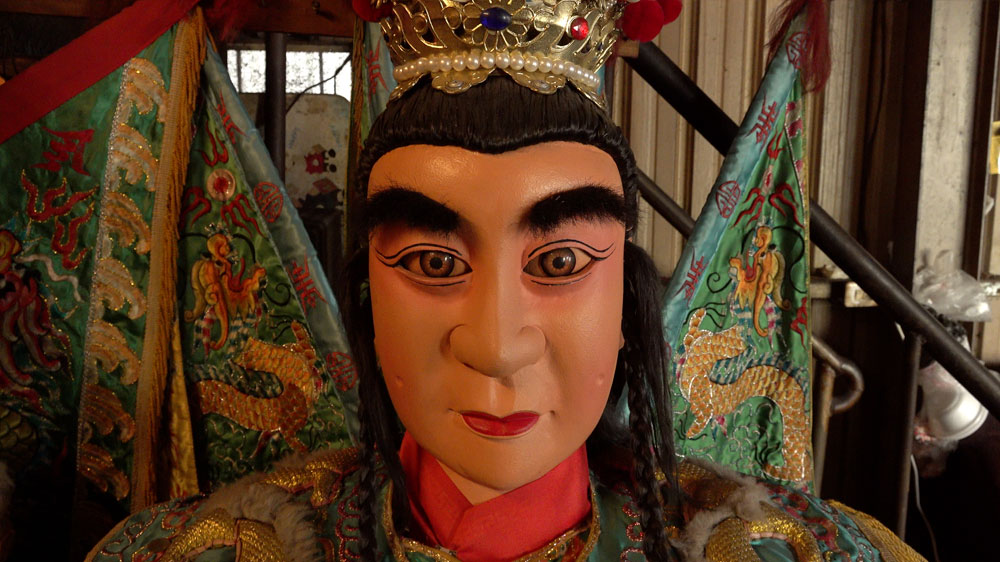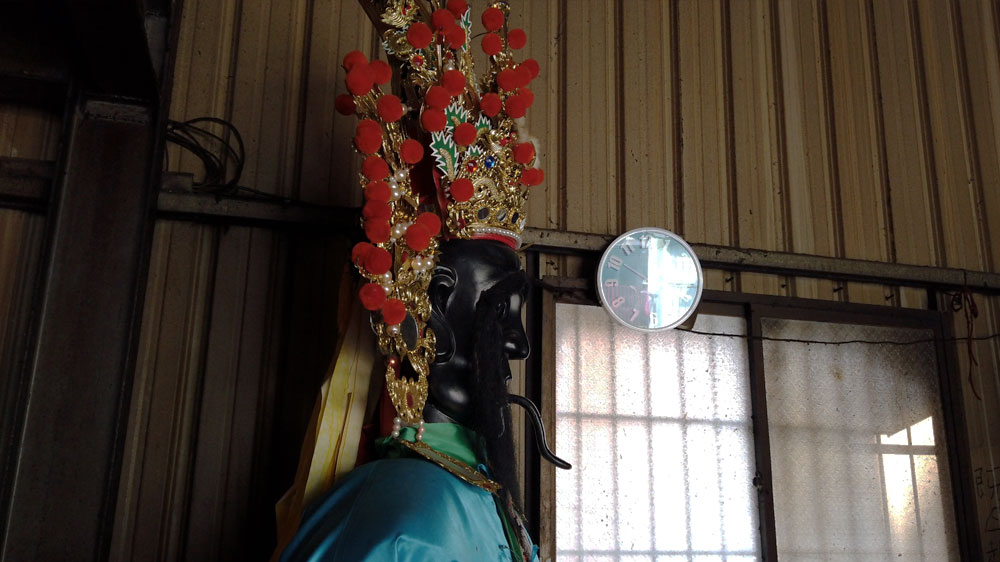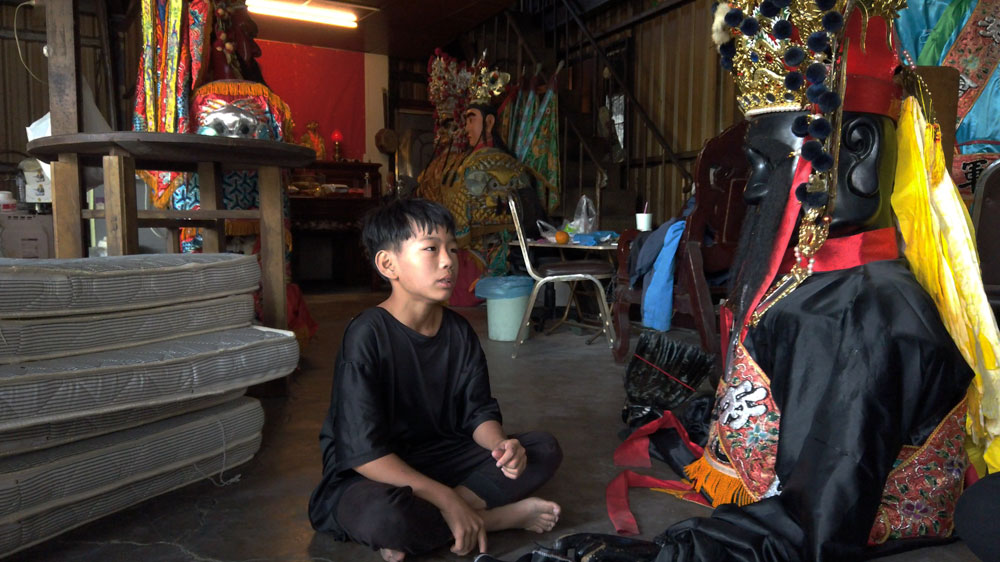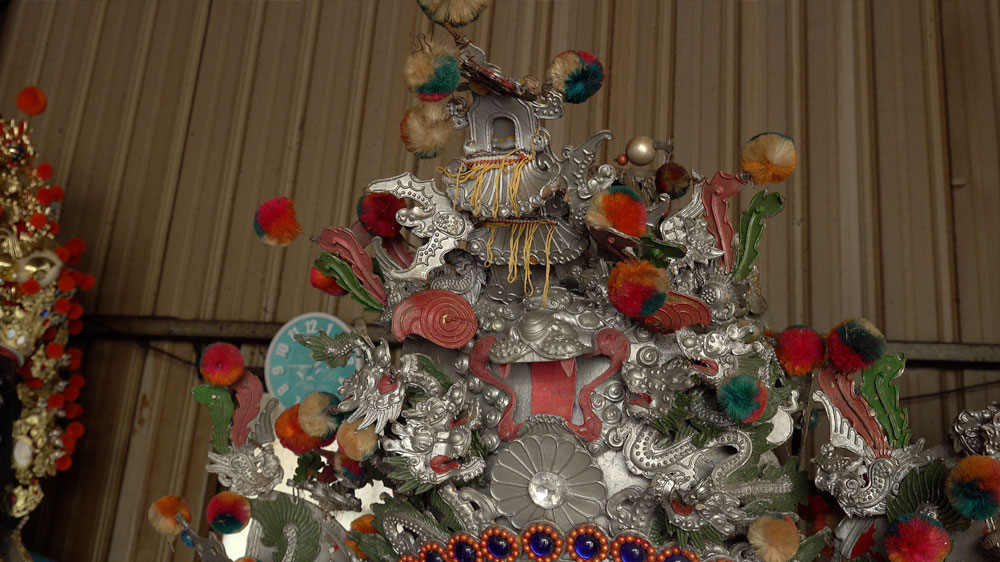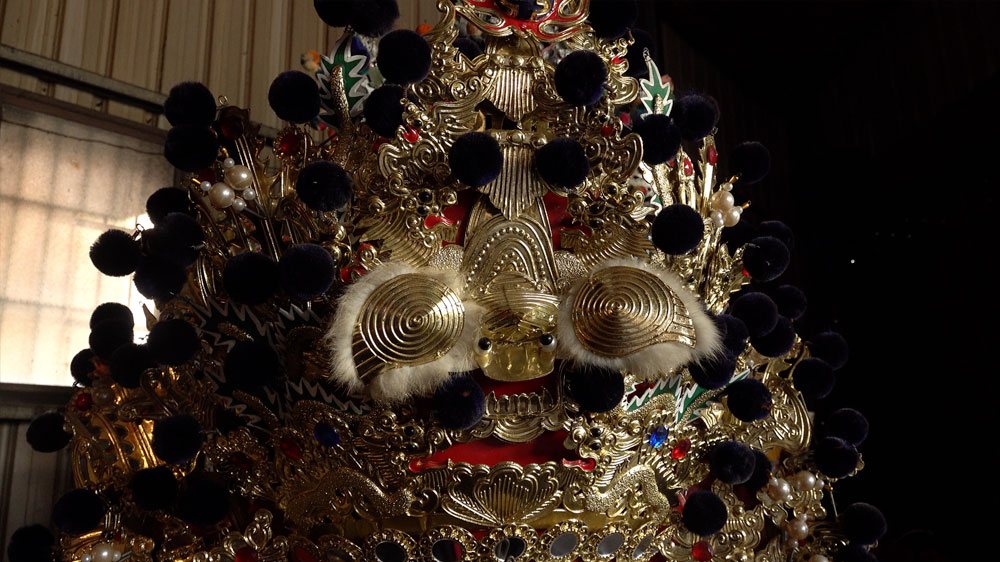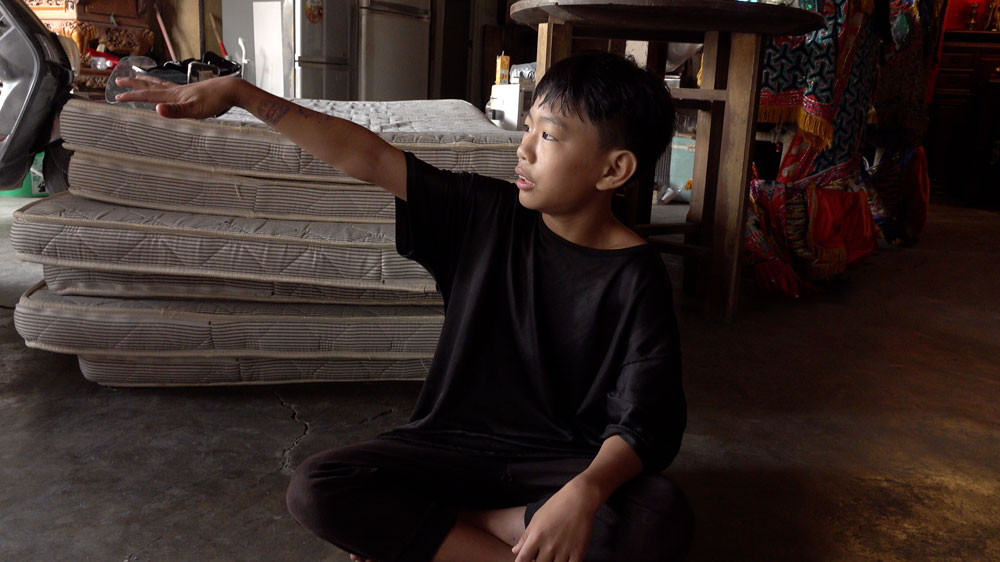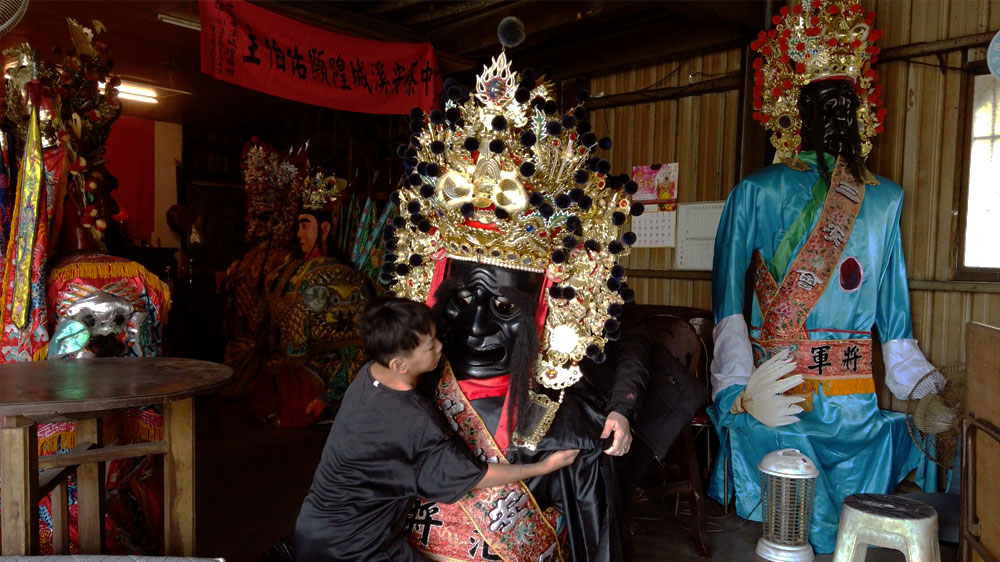We arrived at the Chiayi Bus Station on December 22, 2024, about half an hour past noon, and while we looked for a water dispenser to refill our bottles, a scooter pulled up in front of one of the bus station’s open exit doors and came to a stop. The man on the backseat got off, carefully lifting a wooden statue of a deity that had been riding nestled between him and the man in the front like a small child. He carried the statue to the ticket counter, bought a ticket (or two?) and made his way to the waiting area, where he placed the deity on a seat before heading to the bathroom. We left the station recounting some of the stories anthropologist Teri Silvio had shared with us just two days earlier, when we met for lunch near Dong-Men Station in Taipei.
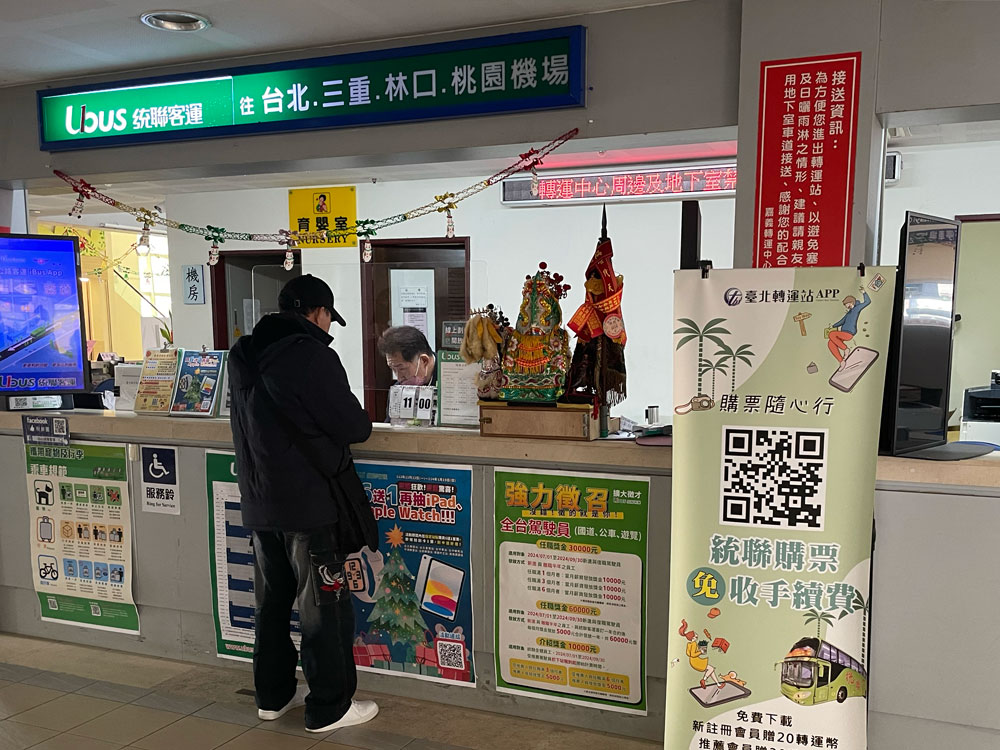
Teri Silvio is a researcher at Academia Sinica of Ethnology and her work focuses “on performance traditions, media technologies, and what happens when they intersect.” We wanted to meet her to learn more about the field work that led her to write: “Puppets, Gods, and Brands: “Theorizing the Age of Animation from Taiwan” in which she explores how people animate inanimate objects and abstract concepts, such as algorithms, climate events or digital technologies. We wanted to learn more about how in contemporary Taiwan things are invested with lives, personalities, and powers―and how people interact with them.
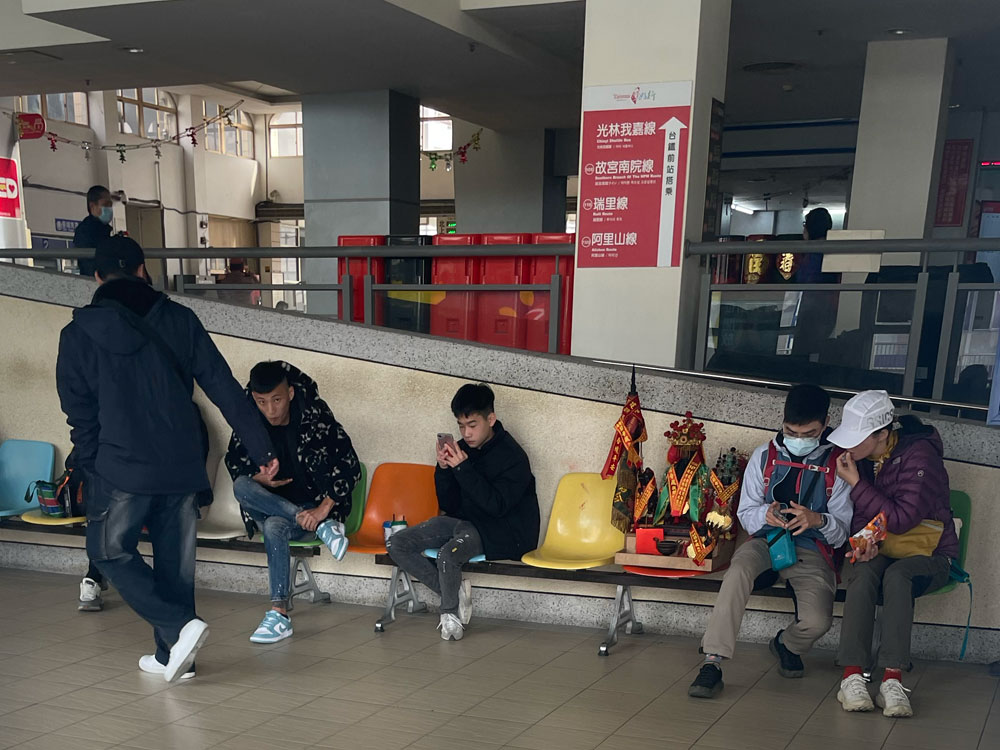
The animating practices which Teri analyzes in her book include the worship of wooden statues of Buddhist and Daoist deities and the craze for cute vinyl versions of these deities, as well as a wildly popular video fantasy series performed by puppets. For Teri “animation is, like performance, a concept that works differently in different contexts,” and is deeply informed by local traditions that build and maintain relationships between body and soul, spiritual power and the material world.
According to google maps, it would take about twenty minutes to walk to our hotel from the bus station, and while one of us focused on the interaction between the pulsing arrow and the blue line on our smartphone screen, the other gazed at the blue sky and the sun, recalling how Teri had explained that an “original statue” like Mazu, Guan Yin, Guan Gong, or Bao Shen Dadi has many anthropomorphic offsprings who are worshipped in their own dedicated temples. She said these offspring most likely carry something from the original statue within their wooden bodies—often a pouch of ash from the incense burner in front of the original statue, or sometimes a strand of the deity’s clothing or hair. On certain days, typically birthdays, these offspring are carried in processions to visit their “relatives,” so they can see each other and enjoy one another’s company. We wondered, if the man at the bus station was bringing one of those figurines to visit relatives in another city, when we came upon a small temple situated next to a lot that appeared to have been cleared for a new urban development and was temporarily being used as a parking space.
We entered the temple, and as we looked through the screens of our phone cameras at the green face, the bulging eyes, and sharp teeth of one of the tall guardian statue standing protectively beside the altar, we heard a strange noise of something shuffling outside. We turned around and saw one of those guardians with yellow ribbons on its back, striding back and forth behind the outdoor incense burner in a dancing fashion. We walked outside and greeted the dancing figure with a nod. The figure waved a fan made of black bird feathers, but we could not tell, if this gesture acknowledged our nod, or if it was part of the dance or ritual the figure was performing outside the temple.
Standing at the edge of small temple plaza next to a parked car with red blinking emergency lights, we tried to find clues, that would reveal more about the figure’s personality or its function. We had seen other fierce looking, colorful guardian puppets during processions who were walking in front or behind deities that were carried in sedan chairs to the next temple, but they always were over-towering the crowd, they all were almost double the height of an average human. This one, in comparison, was smaller than average human height and its dominating color was black. Its wooden head was painted black, its narrow eyes were black, its hair was black, its wooden hands were black, its shiny rope was black, its feathered fan was black, it had a black stick on which hung a black piece of cloth. The figure also wore black flip flops, and in those flip flops were human feet with five toes on each side.
The black was contrasted by a golden, crown-like headdress accentuated with black and red pompons and a red fireball on its top. At its earflaps dangled, like giant earrings, two rectangular mirrors, and out of its back cascaded a thick ponytail of yellow ribbons that fluttered in the wind and gave the figure’s movements extra energy and volume, especially when it turned itself around in fast, tight circles. Red ribbons were coming down from the headdress like braids, a red ribbon encircled the head to secure the crown, a red ribbon was tied around the neck like a collar, reddish/orange sashes with embroidered Chinese characters were fastened around the waist and the chest.
The figure was repeating certain movements which followed a scripted choreography. It moved forward in broad, dignified steps, then stopped in a crouching, warrior-like position to perform gestures with the fan and the black ribbon in its hands, advanced again with sweeping steps in a swinging fashion, slowly bowed in front of the incense burner, then hesitated briefly, before it continued to do another slower, much deeper bow, while a man walked across the small temple plaza without paying attention to the event.
Apart from the squeaking of its swinging wooden arms—likely fastened to its rib cage with metal hooks—and the rustling of its robe and ribbons, the figure emitted no sound. There was no breathing, no humming, no chanting, no singing, no speaking. At times, it appeared as if it was simply practicing, testing the motion of its arms and the gravitational pull on its upper body during bows. At other moments, it felt as though we were witnessing the solemn execution of a ritual, and at some point, when the figure was doing a wide-spread squat while hiding its face behind its fan, we wondered who was inside – yet immediately felt guilty for asking ourselves this question. We knew that we could draw conclusions by looking more closely at the bare feet in the flip flops, but again, felt ashamed for even considering this possibility. It felt disrespectful towards the character’s identity to speculate who or what was animating it.
The figure seemed entirely focused on performing for—or perhaps communicating with—the deities inside the temple. Its movements and gestures were deliberate, directed inward and it paid us no attention, until, suddenly, it did. It was as though the figure experienced a change of mode or intention or a change of heart, when it around, waved its black feathers and started performing the movements it had performed in front of the deities for our outstretched arms, which steadily held the black-cased smart phone that pointed its tiny white face with its two, black lens eyes towards it.
The figure seemed entirely focused on performing for—or perhaps communicating with—the deities inside the temple. Its movements and gestures were deliberate, directed inward and it paid us no attention, until, suddenly, it did. It was as though the figure experienced a change of mode or intention or a change of heart, when it turned around, waved its black feathers and started performing the movements it had performed in front of the deities for our outstretched arms, which steadily held the black-cased smart phone that pointed its tiny white face with its two, black lens eyes towards it.
Eventually it came closer, bowed and when it approached to shake our hands, we deliberately avoided peeking through the open mouth in the carved head, where human eyes might be navigating the figure’s movements, but instead looked into the figure’s black painted, carved out eyes, which scared us a bit at such close range.

The silent performance for our phones lasted about three minutes, then the figure abruptly turned, broke into light, quick steps and ran —slightly “out of character”— down the street to disappear through an open gate into a building with greenish metal siding. Curious, we slowly followed and eventually peered inside the building’s multi-functional interior space, which served as a garage, a living- and a storage room crowded with several large guardian puppets, their faces painted green, red and pink, all dressed in colorfully embroidered robes. Behind a scooter and a stack of mattresses stood a sofa in dim light on which a man and a woman were focused on something spread out on a table. At the far end of the room, an altar glowed red, the smell of incense sticks was in the air.
The two adults waved us inside and once we had entered the garage, the black figure started dancing again, back and forth with heavy steps, then suddenly sat down on the floor and in a childlike voice called out for its mother.
The woman got up from the sofa, grabbed the shoulders of the figure’s body and tried to pull them up, yet the weight was too much for her alone. She called for the man, who came running to hoist the upper body upright. The feet in the flip flops stood up and the figure gradually danced its way out of the garage into the street. A car approached from the back and patiently waited until the figure slowly shuffled to the side, a scooter carrying two adults and a little child passed by and a cat licked its paws, while the figure danced and expanded the ways to communicate with us and our phone-cameras.
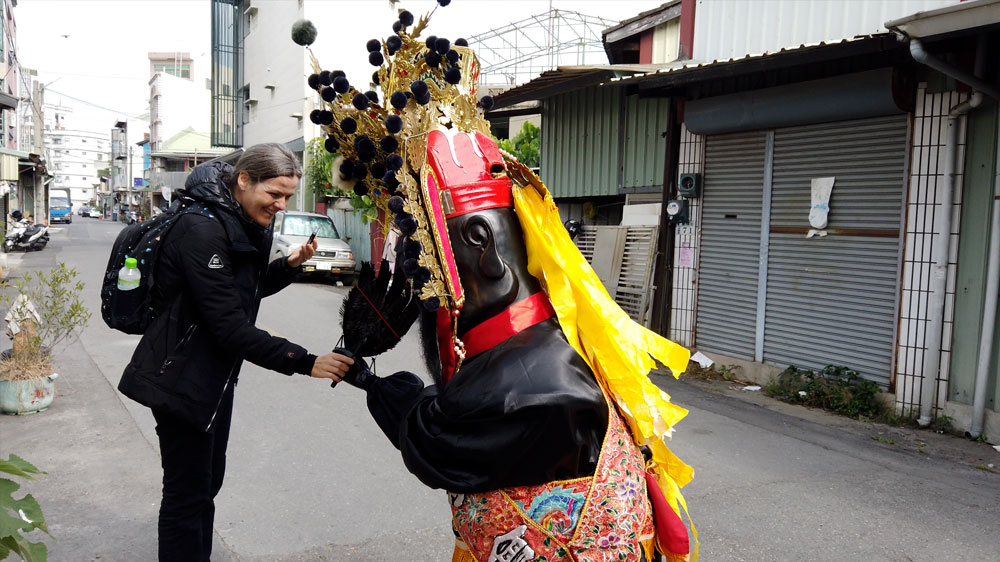
It performed a variety of bows, some small and rapid, others slow and dignified, it experimented with several hand-shakes and made inviting gestures to follow its curvy path. After about ten minutes it retreated back into the garage and the child’s voice called the beetle nut chewing man on the sofa. He got up, lifted the heavy, upper body of the figure, and from inside the vessel emerged a boy in a black shirt and black pants who chewed gum. Without any sort of pause or “revelation,” the boy invited us to return to the temple with him, picking up where we had left off an hour earlier.
The boy gestured towards several deities and guardians, mentioned their names, lit three incense sticks with a lighter, put his hands in prayer position, bowed and carefully planted the sticks in the ashes of the burner. He then lit another three sticks, handed them over and motioned for us to bow before the gods. Following his lead, we pressed our hands together and bowed. He took the incense sticks from our hands and placed them in the burner alongside his own.
He then signaled for us to follow him up a narrow staircase to the second floor, where he introduced us to another assembly of gods, deities, and guardians displayed on a central altar and surrounding smaller shelves. The ritual repeated: he lit incense sticks, bowed, and planted them in the ashes, pointed, explained, lit more sticks for us and gestured for us to offer them to the deities, before we ran up an even narrower staircase to the third floor, where he introduced us to more gods and deities, and lit more incense sticks.
It soon became clear that the boy was very respectful, knowledgeable and proud to share his knowledge, but that he was also an energetic boy, who loved to run up and down the stairs just for the fun of it. So, eventually, as we were following him, running up and down the staircases, bowing, filming, not understanding his language, running, listening, filming and looking and bowing, the religious site of worship started to turn into a sprawling doll house, and from there into a life-sized fairy tale kingdom, populated by characters with immensely intricate backstories. The boy not only knew their biographies and adventures, but by the way he touched and patted the deities, appeared not only to be their worshipper, but also their companion, playmate and care-taker.
The temple tour ended as suddenly as it had begun when the boy’s mother, having appeared on the scooter outside, called out for him. As they headed back toward the garage, they gestured for us to follow, and by the time we arrived, the mother had already settled back onto the sofa joining the man, while the boy instructed us on how to wear one of the guardian figures. We inserted our bodies first into a skeleton with a head that had a large bird’s beak, then into a fully clothed figure, which we attempted to get into a swinging dance style on the street.
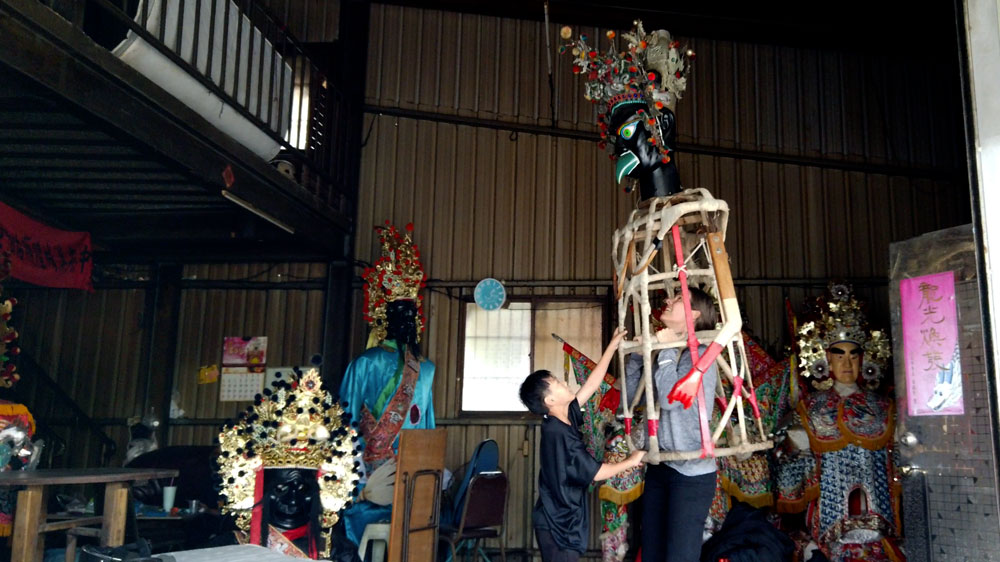
The puppets’ bodies were heavy and because they were so tall, it seemed easy to loose one’s balance and fall over backwards. While we tried to perform broad, steady, dignified steps and find the upper body movement that would start getting the puppet’s arms into its swinging rhythm, the boy, walking backwards in front of us, kept providing verbal instructions through the hole inside the puppet’s belly, which allowed us to see, where we were going. Eventually the man from the sofa appeared in front of the belly hole, leaned in, grinned revealing his dark red, beetle-nut-stained teeth, blew some cigarette smoke inside the vessel and disappeared again together with the boy’s mother who was in a hurry to get some other place. After a while, they both briefly returned, yet aside from offering a gesture of encouragement, they seemed indifferent with our progress. Sensing no objection, we took it as a sign to keep follow the boy’s lead and kept practicing to walk a parade of different puppets down the street.
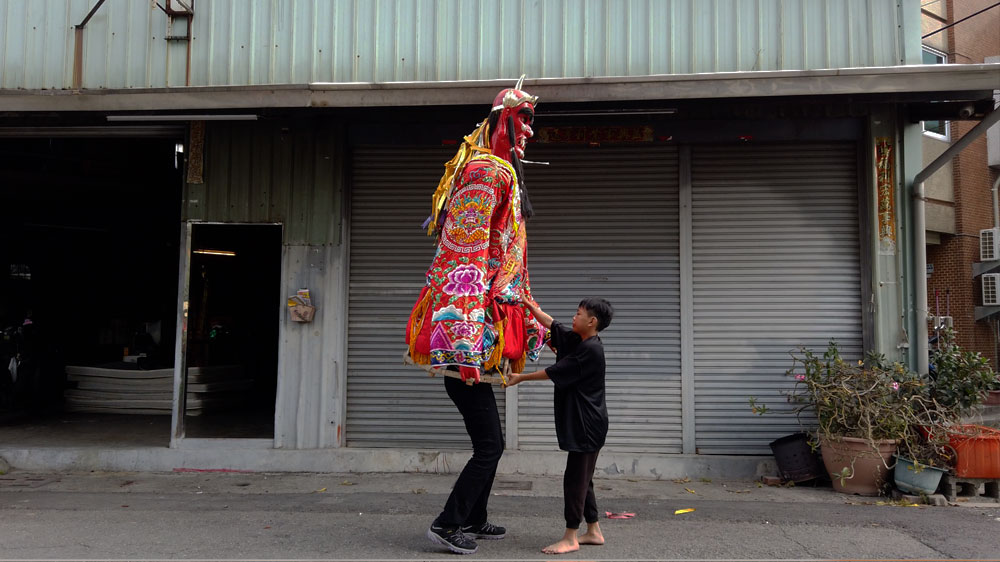
After a while the boy decided to end the practice in front of the garage. We returned the figures inside and he sat down cross-legged on the floor. We sat down across from him as he began to speak with calm authority, pointing at the figures behind us, drawing invisible points, circles and diagrams onto the concrete floor.
Although we could only understand about 10-20% of the vocabulary he used, the boy kept us captivated. His voice, facial expressions and body gestures expressed such a natural and straightforward confidence about the internalized knowledge he was sharing with us, it made us wonder how he would be able to guard this incredibly open state of mind from cynicism, disappointments and other manipulating forces as he grew older.
And then we began to worry: how would our interaction influence that future state of mind? We felt stupid and ignorant for not being able to understand more Mandarin and Taiwanese, and began searching our brains for a few words we could use to show the boy that he was not wasting all his energy on totally clueless adults: “What about the mirrors on the puppets head?” “That one has a green face, that one has a red face. Why?”

Our stumbling questions were taken seriously. Since there were so many puppets with bushy eyebrows, two eyes, three eyes, nose plates, stretched out tongues, scary grins, sharp canines, elaborate face paintings, flashy make up, intricate hairstyles, voluptuous headdresses, as well as flags, swords and robes, thickly embroidered with dragons, flowers, flames, lions and Chinese characters, each of the boy’s explanations seemed to connect a tangible story strand leading towards mythological infinity, with another one, and another one, and another one – all of them intersecting at different points in times, cosmologies and universes to weave a net of astonishing complexity that stretched itself through heavens, hells and dimly lit garages, which reminded us, that just the day before we had read on a random website, that some anonymous estimates place the number of individual Taiwanese gods, goddesses, deities, and ghosts at around 36,000. How many of those did the boy know – by name, by deed, by relation, by wrong-doing, by punishment, by power and wisdom, by performing miraculous feats and wonders?
He talked, we listened, he got up, lit incense sticks, we followed suit. We climbed another staircase into the second floor of the garage to see more puppet bodies and puppet heads that eventually would walk through the streets during processions surrounded by exploding firecrackers and pounding drums. We sat down again, we got up again. Eventually it seemed time to part ways and while we packed up our jackets, battery packs, bag packs and phones, which were scattered all over the garage, the boy was sitting on a box, his shoulders slumped, staring into the air.
Ready to leave we said: “Thank you for telling us all these interesting stories,” to which he replied: “You are welcome.”
An unpleasant bubble in our throats indicated, that we had left something unspoken, that being tied to mostly non-verbal communication created a hollowness. Could we say anything else? Were we supposed to do anything else right now? Give him something, hug him, shake his hand? Had our attention drained him empty? Was he feeling the kind of emptiness that sometimes spread inside our bodies, when people for whom we had presented and performed “our world” and “how it worked” during studio visits said: “Thank you for telling us all these wonderful stories, your work is amazing, see you soon again,” then walked away, leaving behind existential doubts and suspicions, that our world might not be really real or compatible with that other world they inhabited?
All night we thought about the boy and the locations and intersections of his visible and invisible worlds and its inhabitants and when we returned to Chaiyi on Christmas Day three days later after a trip into the Alishan mountains, we rented two U-bikes, followed the all-knowing google map to a toy store, bought a Batman Lego set and asked the friendly clerk to copy the note, which google translate had produced for us on our blue glowing i-phone screen in fat, white, glaring characters. She kindly offered to use her most beautiful handwriting.
We biked back to the garage, handed the gift to the beetle-nut-chewing man on the sofa and said: “We would like to leave a gift for the boy as a thank you for sharing his knowledge with the foreigners.”
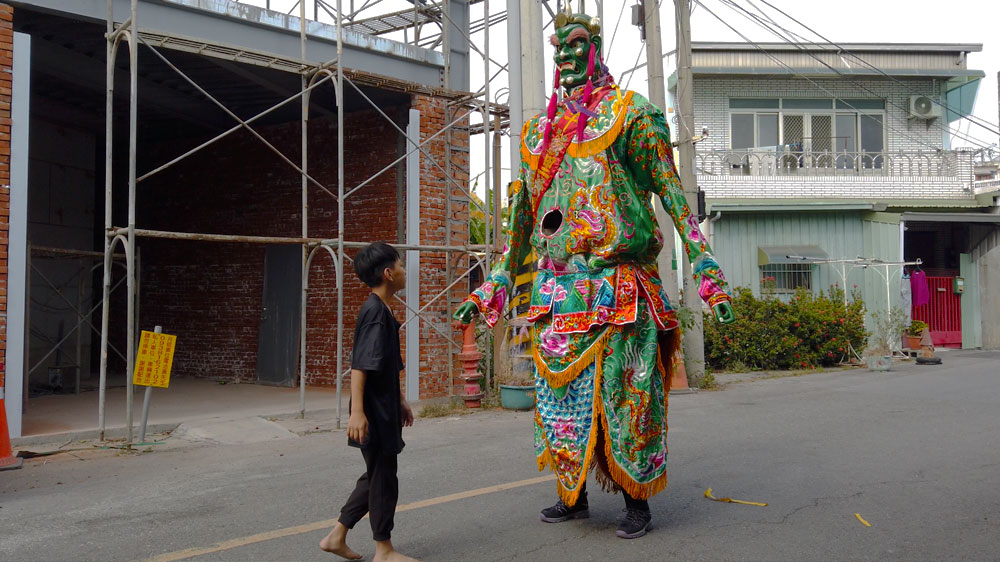
For reference, we would like to add a note written by Serena Liu, who assisted us with research into the specifics of the black puppet:
As for the 大仙尪仔, also known as the “Shen Jiang” (神将, meaning “divine general”), these impressive figures are a common sight at Taiwanese temple festivals. The large puppets are about twice the size of an adult person and resemble the statues of gods worshipped in the temples. They’re hollow inside, with a person hiding inside to carry them on their shoulders. When they move, their arms swing dramatically, emphasizing the god’s power and presence. These puppets are usually accompanied by traditional music, like Beiguan or the sounds of gongs and drums, during temple processions or when entering the temple. You can often see them in action during temple parades or festival activities. According to the website of the national archives, each temple has its own set of Shen Jiang, and the design of these figures can vary depending on the temple’s main deity.
I used the photo you sent me to search its name on Google. I found many similar images in blogs, but none of them clearly stated who this big puppet was. After a bit of searching, I finally found one that looked very much like it, and it was labeled as “General Fan” (范将军).
Turns out, it’s a figure I’m already familiar with.(I mean, growing up, I heard 七爺 qī yé. and 八爺 bā yé a lot!)
“The “Fan Xie General” (范謝將軍) is commonly known as the “Seventh Lord” (七爺 qī yé) and “Eighth Lord” (八爺 bā yé) in local folklore. They serve as attendants to the City God (城隍爺), responsible for capturing souls and escorting them for trial. When the City God goes on a procession, these large divine figures often lead the way, making them the most eye-catching and attention-grabbing during traditional temple festivals.
The Seventh Lord(七爺 qī yé), Xie General (謝將軍), whose real name is Xie Bi’an, wears a white robe and is tall and slim. The Eighth Lord 八爺 bā yé, Fan General (范將軍), whose real name is Fan Wujiu, wears a black robe and is short and stout.” > from Taiwan Cultural Memory Bank
